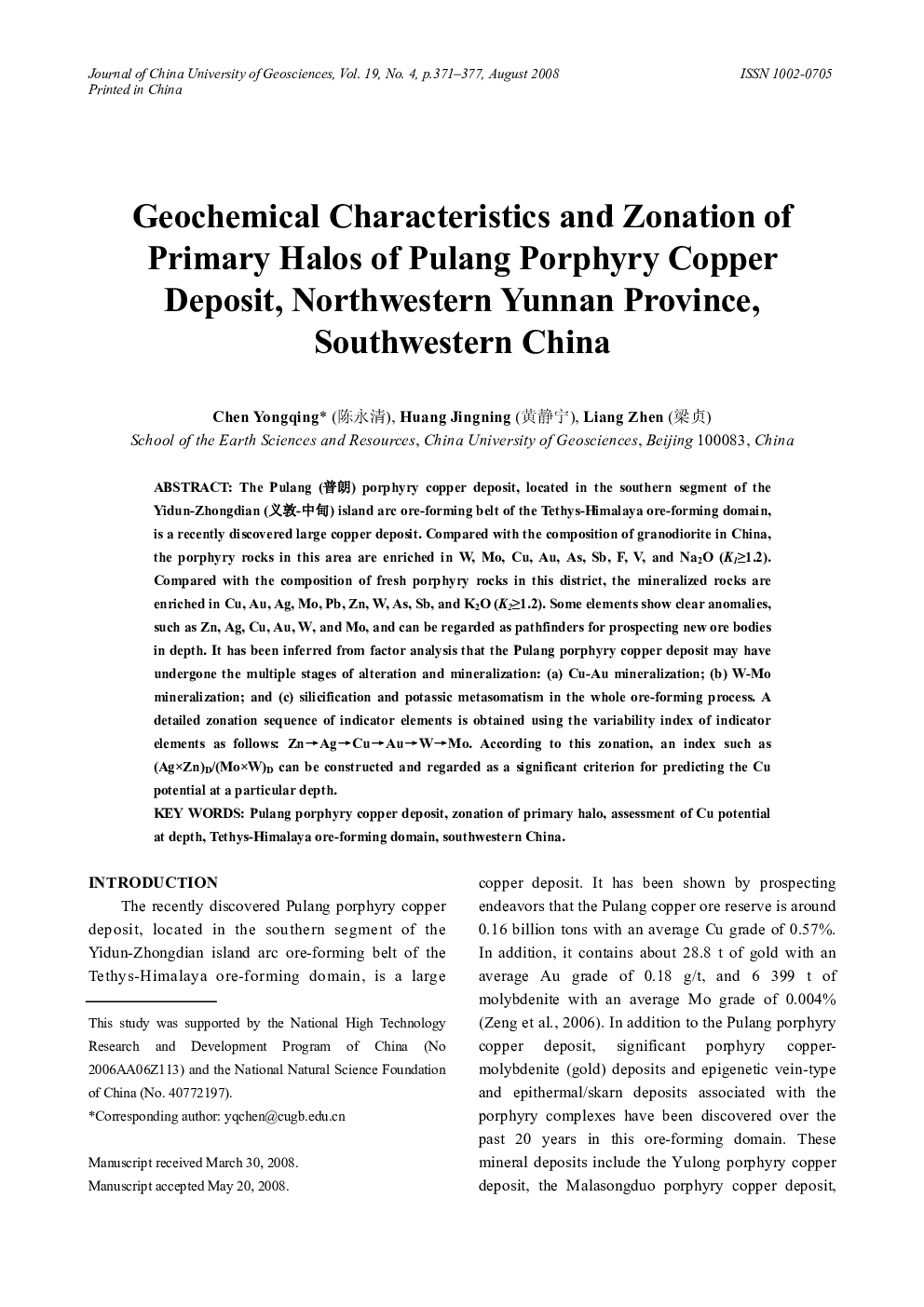| Article ID | Journal | Published Year | Pages | File Type |
|---|---|---|---|---|
| 4687791 | Journal of China University of Geosciences | 2008 | 7 Pages |
Abstract
The Pulang porphyry copper deposit, located in the southern segment of the Yidun-Zhongdian island arc ore-forming belt of the Tethys-Himalaya ore-forming domain, is a recently discovered large copper deposit. Compared with the composition of granodiorite in China, the porphyry rocks in this area are enriched in W, Mo, Cu, Au, As, Sb, F, V, and Na2O (K1â¥1.2). Compared with the composition of fresh porphyry rocks in this district, the mineralized rocks are enriched in Cu, Au, Ag, Mo, Pb, Zn, W, As, Sb, and K2O (K2â¥1.2). Some elements show clear anomalies, such as Zn, Ag, Cu, Au, W, and Mo, and can be regarded as pathfinders for prospecting new ore bodies in depth. It has been inferred from factor analysis that the Pulang porphyry copper deposit may have undergone the multiple stages of alteration and mineralization: (a) Cu-Au mineralization; (b) W-Mo mineralization; and (c) silicification and potassic metasomatism in the whole ore-forming process. A detailed zonation sequence of indicator elements is obtained using the variability index of indicator elements as follows: ZnâAgâCuâAuâWâMo. According to this zonation, an index such as (AgÃZn)D/(MoÃW)D can be constructed and regarded as a significant criterion for predicting the Cu potential at a particular depth.
Keywords
Related Topics
Physical Sciences and Engineering
Earth and Planetary Sciences
Earth-Surface Processes
Authors
Chen Yongqing, Huang Jingning, Liang Zhen,
